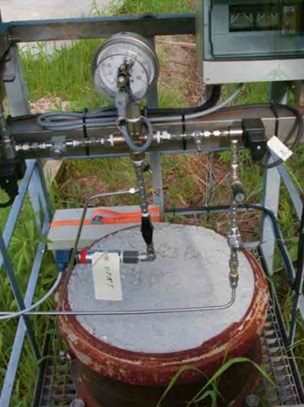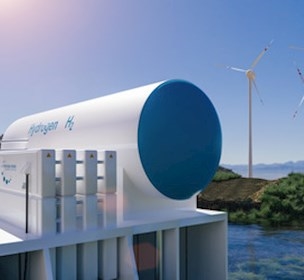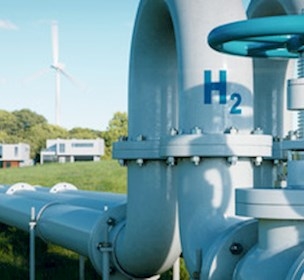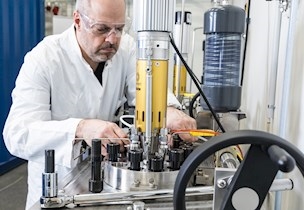Danish gas pipelines are ideal for transporting hydrogen
Ten years of testing show that steel pipes in the Danish gas transportation and distribution network, and plastic pipes in the Danish and Swedish gas distribution network, can transport pure hydrogen.
Annual pipe segment testing
In the project's first phase, plastic pipes were tested by cutting out a segment of each test pipe annually for four years. Then, a comprehensive analysis was conducted to determine whether hydrogen could break down the plastic pipes.
Rheological studies and melting index tests were used to detect any structural changes that might have occurred in the material. Breaking load and elasticity were also measured, and the pipes were inspected for cracks.
The plastic pipe tests found no degradation associated with long-term exposure to hydrogen. This strongly suggests that the tested plastics; namely, PE 80 and PE 100, are suitable for use in environments containing hydrogen.
To verify these results, the pipes were exposed to hydrogen for six more years, resulting in a total hydrogen exposure time of ten years at the time of the last test. This test had the same result as the four-year test, supporting the conclusion that hydrogen has no immediate impact on plastic pipes.

Fatigue-induced cracks may occur in steel pipes
The Danish gas transmission network is subject to pressure fluctuations of up to 20 bars in everyday operation, with a range of about 50 to 70 bars.
In light of this, the purpose of testing the steel pipes was to determine whether hydrogen increases the risk of fatigue-induced cracking.
Dynamic, full-scale experiments were performed using randomly selected pipe segments made of API 5L X70 steel (the type most widely used in the Danish gas transportation network) with a diameter of 20 inches and a wall thickness of 7 mm. The segments were extracted from the Danish natural gas transmission network.
The pipe segments had round seams and were welded when the pipelines were laid in the early 80s. The pipe segments were subjected to pressure variations twice as large as the maximum ordinary fluctuation in the Danish gas transportation network. The number of pressure cycles performed is equivalent to 80 years of operation.
Subsequent analyses of the welds showed no signs of crack expansion or initiation. Supposing that the pipe segments used are representative of the entire Danish gas transportation network, the results of these experiments show that the steel used in the gas transportation network is compatible with hydrogen under the pressures occurring in the network.
FORCE Technology developed the testing scheme and conducted the materials science inspections of the steel. Evidas Testcenter conducted the actual tests.
A hydrogen technology testing centre benefits businesses in the green transformation
FORCE Technology has collaborated with none other than Evidas Testcenter to establish a hydrogen technology testing centre where businesses can easily get the assistance and advice, they need for testing hydrogen technology and transitioning to hydrogen. In addition to offering laboratory-based testing, the testing centre also offers mobile testing facilities.
The centre services all hydrogen technology, from boilers and fuel cells to large, district-level facilities, and from kilowatt to gigawatt scale.





